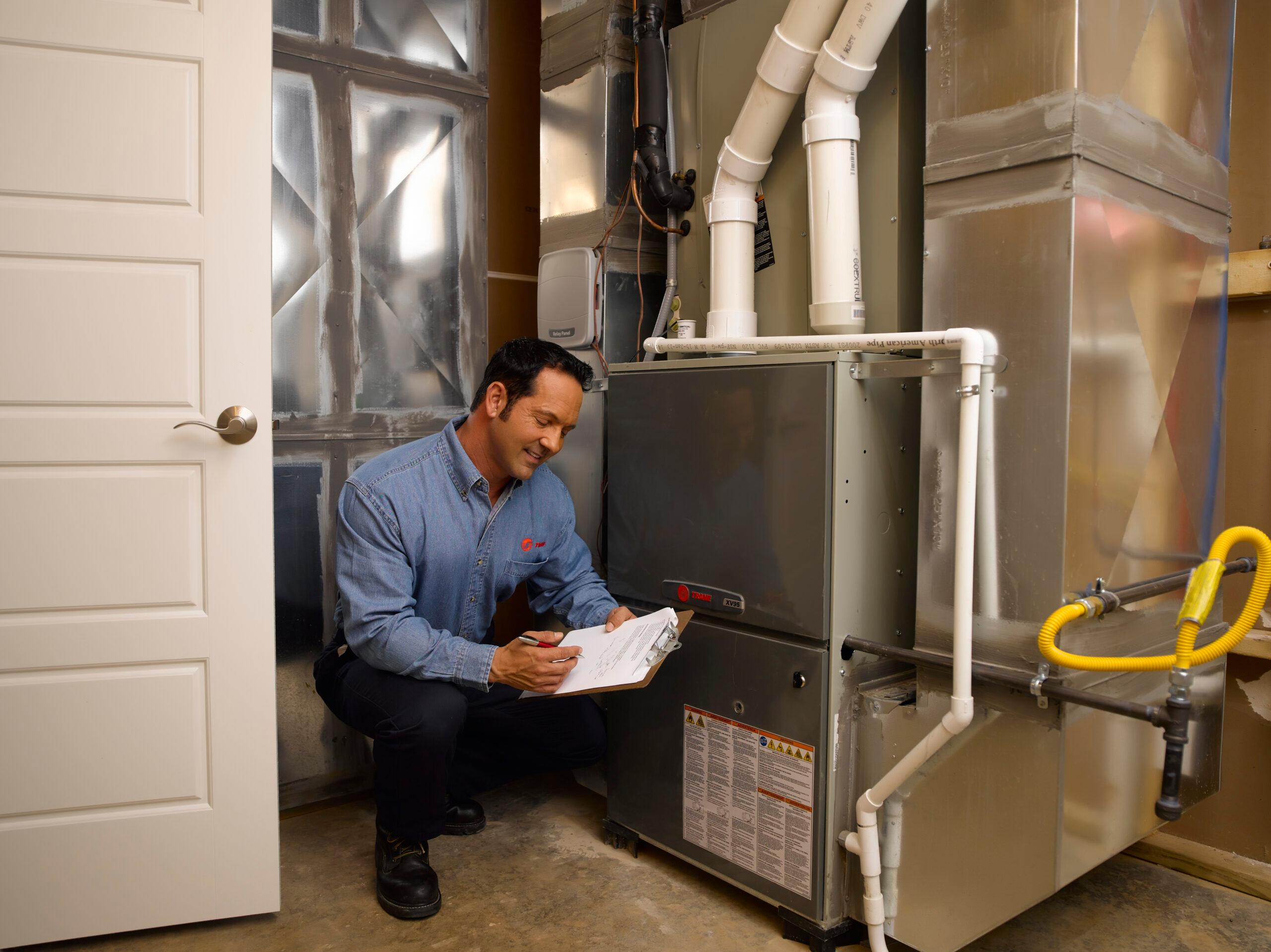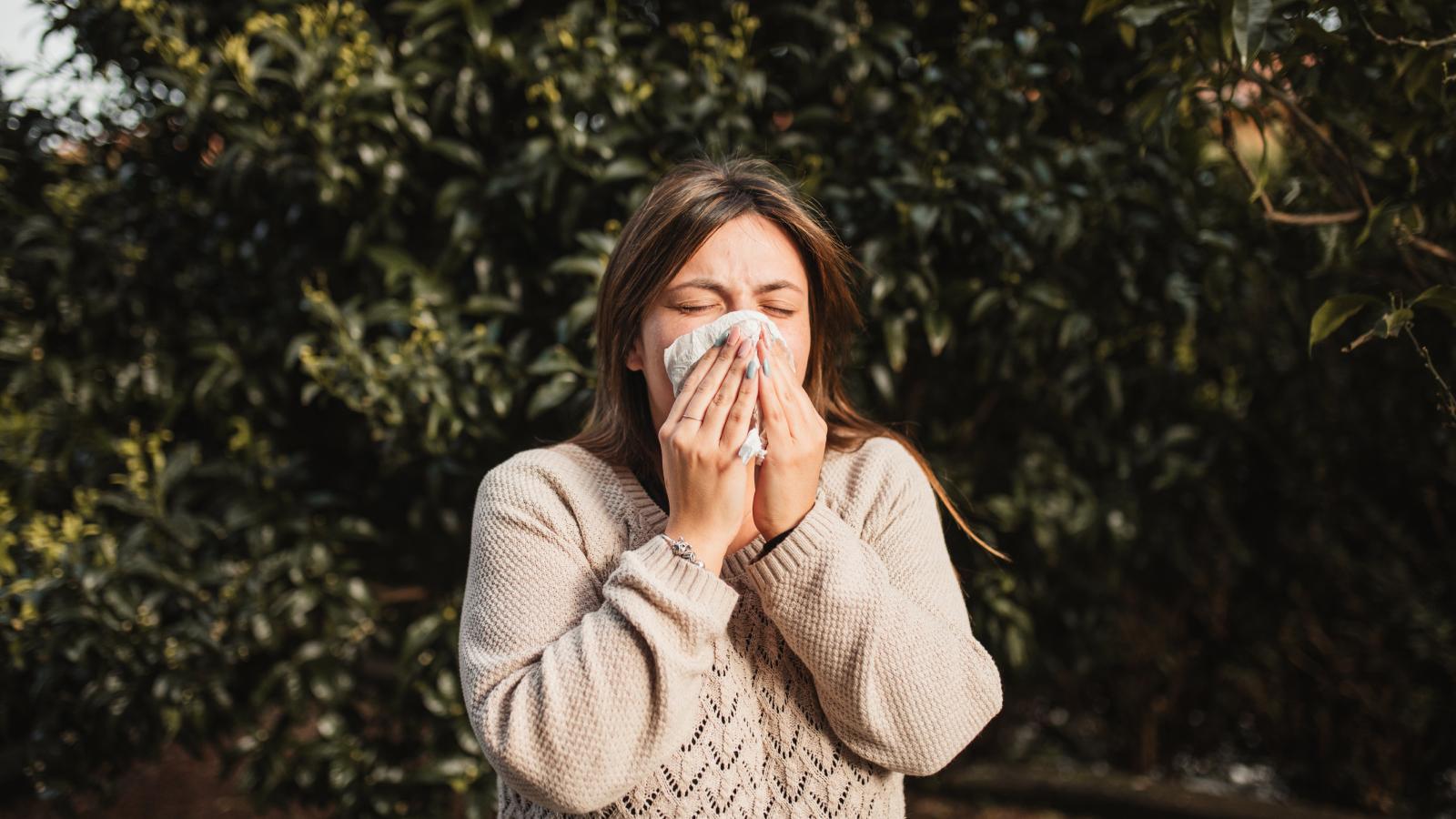Guide to Surviving Fall’s Seasonal Allergies
As the leaves change color and the air chills, many of us eagerly anticipate the arrival of autumn. However, for some, fall isn’t just about pumpkin spice lattes and cozy sweaters; it’s also the season of allergies. Fall allergies can put a damper on the season, but with the right knowledge and tools, you can enjoy the beauty of autumn without constantly sneezing and sniffling.
Explore the symptoms and causes of fall allergies and learn effective strategies to combat fall allergies with your home HVAC system.
The Prevalence of Fall Allergies
Fall allergies, often referred to as "hay fever" or "seasonal allergic rhinitis," affect millions of people worldwide. While allergies can strike at any time of year, the fall season is notorious for triggering allergic reactions in many individuals. According to the American College of Allergy, Asthma, and Immunology, ragweed is the primary culprit behind these autumn allergies. Ragweed pollen levels typically peak from late summer through the fall months, making it a significant allergen source.
Common Symptoms of Fall Allergies
Fall allergies can manifest with various symptoms - all of which are uncomfortable. Common symptoms include:
- Sneezing: Frequent and uncontrollable sneezing is a hallmark of fall allergies.
- Runny or Stuffy Nose: Nasal congestion, a runny or stuffy nose, and postnasal drip are typical symptoms.
- Itchy, Watery Eyes: Allergies can cause irritation, redness, and itching in the eyes.
- Coughing: Persistent coughing may be triggered by a scratchy throat caused by postnasal drip.
- Fatigue: Allergic reactions can leave you feeling tired and worn out.
- Wheezing: Some individuals with allergies may experience wheezing or shortness of breath.
Causes of Fall Allergies
The primary cause of fall allergies is the release of pollen from plants like ragweed, sagebrush, and other weed plants. When these plants release pollen into the air, it can be inhaled, leading to allergic reactions in sensitive individuals. In addition to pollen, mold spores also become more abundant in the fall due to damp conditions. Mold allergies can exacerbate the symptoms experienced during the fall season.
Fall allergies are primarily caused by the presence of certain allergens in the environment during the autumn season. The most common triggers of fall allergies include:
- Ragweed Pollen: Ragweed is one of the most significant culprits behind fall allergies. It releases large amounts of pollen into the air from late summer through the fall months. Ragweed pollen is lightweight and can travel long distances, making it easy to inhale and leading to allergic reactions.
- Weed Pollen: In addition to ragweed, other weed plants like sagebrush, lamb's quarters, and pigweed also release pollen in the fall, contributing to seasonal allergies.
- Mold Spores: Damp and decaying vegetation during the fall season can promote the growth of mold spores. Mold allergies can be particularly problematic during this time, especially in areas with high humidity or in homes with mold issues.
- Dust Mites: Although dust mites are a year-round allergen, their presence indoors can worsen during the fall when people spend more time indoors with closed windows and doors. Dust mites thrive in warm, humid environments and feed on skin flakes shed by humans and pets.
- Indoor Allergens: As people spend more time indoors during the cooler fall months, exposure to indoor allergens such as pet dander, dust, and indoor mold may increase, exacerbating allergy symptoms.
Fight Seasonal Allergies with Cleaner Air
According to the Asthma and Allergy Foundation of America, homeowners dealing with fall allergies can take three key steps to improve indoor air quality. These measures can help alleviate symptoms and create a more comfortable living environment.
Control Humidity Levels with a Whole-House Dehumidifier
Maintaining the right humidity level in your home is crucial in the battle against fall allergies. When indoor humidity deviates from the recommended range of 30 percent to 40 percent, it can create an ideal environment for allergens like mold, dust mites, and other irritants to thrive. Investing in a whole-house dehumidifier allows you to have precise control over humidity levels throughout your entire home.
Modern whole-house dehumidifiers offer the ability to fine-tune humidity levels within 1 percent of your desired range. By doing so, you eliminate the conditions that favor the growth of mold, dust mites, fungi, bacteria, and other contaminants, effectively reducing allergy triggers in your indoor environment.
Trane Whole-Home Dehumidifiers maintain optimal indoor humidity levels, ensuring a comfortable and healthy home environment. Seamlessly integrated with your HVAC system, these dehumidifiers provide quiet and energy-efficient operation, effectively eliminating excess moisture, allergens, and the risk of mold and dust mites.
Maintain Clean Air with Ultraviolet Air Purifier for Allergies
Ultraviolet germicidal lights are an excellent addition to your HVAC system to help maintain clean air in your home. These lights work by deactivating microorganisms present in the air before they circulate from room to room. As air exits your HVAC unit and enters the ducts, it passes through intense ultraviolet light, rendering contaminants inactive before they can spread.
One of the common questions asked by allergy sufferers is, "What is the best air purifier for allergies?" Ultraviolet germicidal lights provide an answer by significantly improving air quality. Studies have shown that these lights can eliminate up to half of concentrated bioaerosols within the first 45 minutes of use, making your indoor air much cleaner and healthier.
Capture Allergens with HEPA Air Filters
Knowing how to kill dust mites and remove allergens is an important part of allergy management. High-Efficiency Particulate Air (HEPA) filters are a crucial component of any effective allergy management strategy and can kill even the smallest dust mites. These filters are specifically designed to capture 99.97 percent of airborne pollutants, including common fall allergens like ragweed, pollen, and dust mites*. HEPA filters excel at eliminating various contaminants, such as tobacco smoke, dirt particles, and odors.
By incorporating HEPA air filters into your HVAC system, you can significantly reduce the presence of allergens in your home's air, relieving fall allergy symptoms and improving overall indoor air quality.
Trane CleanEffects™ Air Purification System drastically improves indoor air quality. This innovative system employs groundbreaking technology to remove up to 99.98% of airborne particles, including dust mites, pollen, and allergens*.
Regular Ductwork Maintenance
Cleaning your ductwork early in the season helps eliminate one of the primary sources of airborne debris in your home, ensuring that the air you breathe remains clean and allergen-free.
Historically, HVAC systems have not always been efficient at removing pollutants from the air, allowing debris to circulate through the ductwork over time. But, understanding how to kill dust mites and remove existing allergens can help reduce fall allergies. To address this issue, schedule duct cleaning services, especially before turning on the heat for the first time in the fall.
Contact the Experts to Reduce Seasonal Allergies
Seeking assistance from a Trane Comfort Specialist is your key to addressing dust mites and fall allergies. Each home is unique, requiring a tailored approach to tackle indoor pollutants and allergens effectively. From choosing the best air purifier for allergies and killing dust mites to conducting regular ductwork cleaning, Trane experts can help you rid your home of fall allergies. To have one of our indoor air quality specialists help create an allergen-free environment in your home, contact Trane today.
*As reported by Airmid Healthgroup in ASCR092142v2, assuming <1% removal rate of 0.3 – 10 micron particles (2015).




